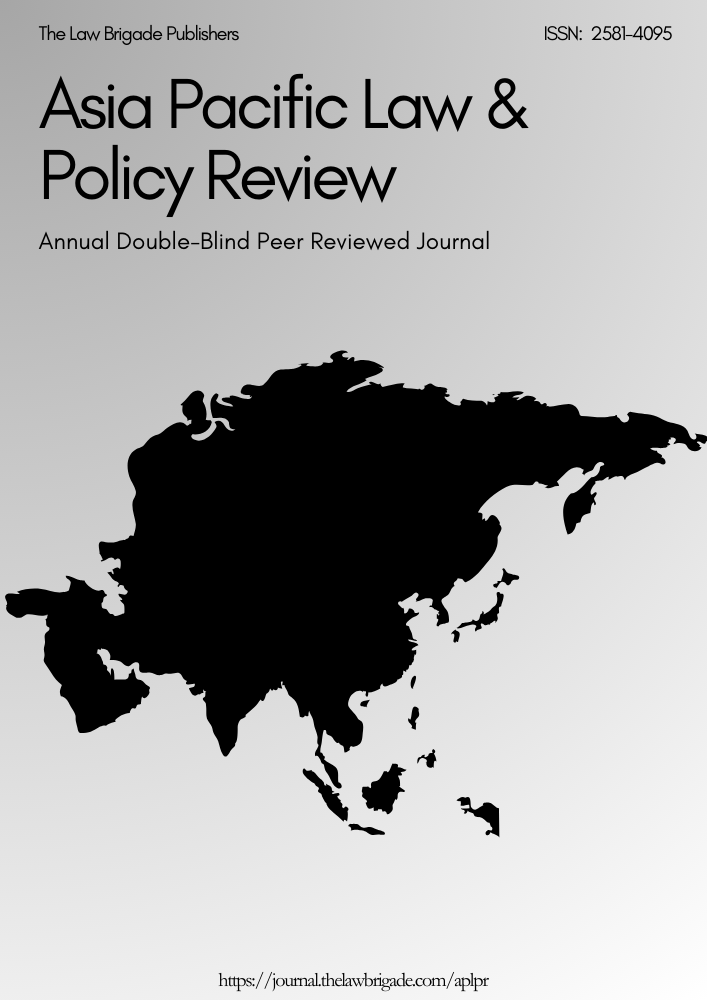SLIP OF COCONUT OIL – CENTRAL EXCISE TARIFF CLASSIFICATION BASED ON QUANTITY
Keywords:
Central Excise,, Packaging, Classification, Quantity and SizeAbstract
Tax is nothing but money that people have to pay the Government, which is used to provide public services. Though the collection of tax is to augment as much revenue as possible to the Government to provide public services, over the years it has been used as an instrument of fiscal policy to stimulate economic growth. Thus it is one of the socio-economic objectives. Some taxes are direct and others are indirect. Under our constitution, while the Central Government is vested with the powers of levy and collection of certain taxes, the State Governments are empowered to levy and collect certain other type of taxes. Excise Duty is an indirect tax levied and collected on the goods manufactured in India. In one of the recent cases that were argued in the Supreme Court, the classification of central excise tariff on the parameter of quantity was an issue. This article will deal with the same aspect i.e. (1) whether the Revenue can classify a product under a different heading based on the quantity of packaging, (2) can a product being packed in different sizes ( small, medium, large ) be classified into 2 or more different headings based on the packaging or the size of packets or common usage in the market based on packaging ( small packet in a different heading, medium in another and large in another ) even though it is the same product in each packet. Various means to do so will be analysed along with case laws. To end it all, the article will conclude that such classifications is vague in nature as a product with no change in composition can be classified under two separate headings just based on its packet size.
Downloads
Downloads
Published
Issue
Section
License

This work is licensed under a Creative Commons Attribution-NonCommercial-ShareAlike 4.0 International License.
License Terms
Ownership and Licensing:
Authors of research papers submitted to any journal published by The Law Brigade Publishers retain the copyright of their work while granting the journal specific rights. Authors maintain ownership of the copyright and grant the journal the right of first publication. Simultaneously, authors agree to license their research papers under the Creative Commons Attribution-ShareAlike 4.0 International (CC BY-SA 4.0) License.
License Permissions:
Under the CC BY-SA 4.0 License, others are permitted to share and adapt the work, even for commercial purposes, provided that appropriate attribution is given to the authors, and acknowledgment is made of the initial publication by The Law Brigade Publishers. This license encourages the broad dissemination and reuse of research papers while ensuring that the original work is properly credited.
Additional Distribution Arrangements:
Authors are free to enter into separate, non-exclusive contractual arrangements for distributing the published version of the work (e.g., posting it to institutional repositories or publishing it in books), provided that the original publication by The Law Brigade Publishers is acknowledged.
Online Posting:
Authors are encouraged to share their work online (e.g., in institutional repositories or on personal websites) both prior to submission and after publication. This practice can facilitate productive exchanges and increase the visibility and citation of the work.
Responsibility and Liability:
Authors are responsible for ensuring that their submitted research papers do not infringe on the copyright, privacy, or other rights of third parties. The Law Brigade Publishers disclaims any liability for any copyright infringement or violation of third-party rights within the submitted research papers.


